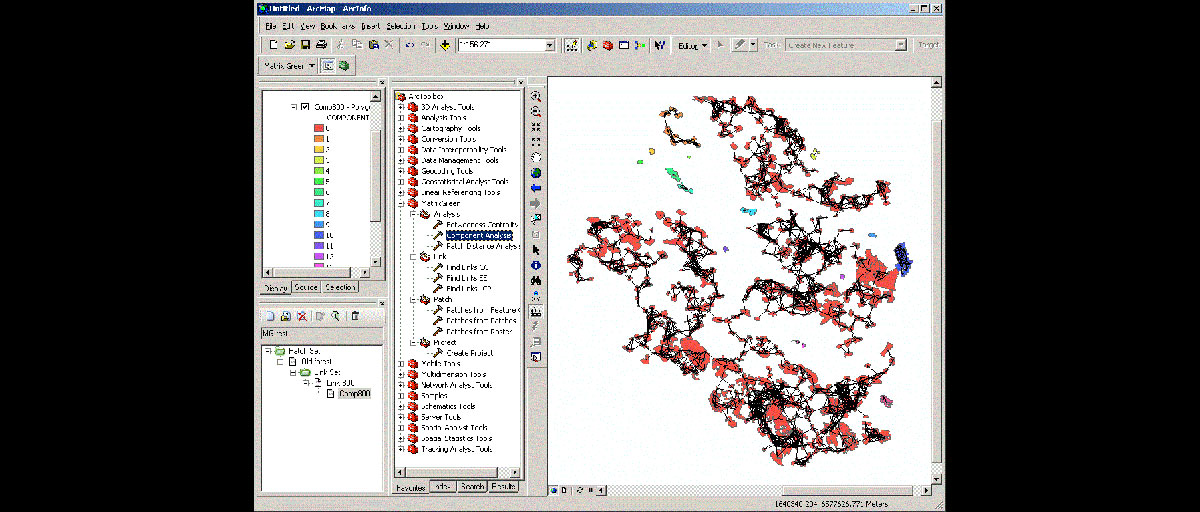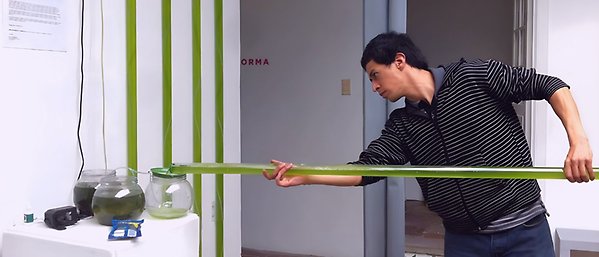
MatrixGreen supports network-based (or graph theoretical) analyses of fragmented landscapes
MatrixGreen was developed by centre researcher Örjan Bodin and Andreas Zetterberg at the Royal Institute of Technology (KTH). The tool supports network-based (or graph theoretical) analyses of fragmented landscapes.
The tools builds on ongoing research on landscape fragmentation, see for example Andersson, E., and Ö. Bodin. 2009. Practical tool for landscape planning? An empirical investigation of network based models of habitat fragmentation. Ecography 32(1): 123-132.
and Zetterberg, A., U. Mörtberg, and B. Balfors. 2010. Making graph theory operational for landscape ecological assessments, planning, and design. Landscape and Urban Planning 95(4): 181-191.
MatrixGreen is the main output of a recent project gathering a number of different land-use planners, ecologists and others in the Stockholm County. You can read more about the project here (in Swedish only)
Freely available
MatrixGreen is freely available for anyone to use under the condition that
1. it is not redistributed
2. the use is strictly non-commercial
3. it is properly cited: Bodin, Ö. and A. Zetterberg (2010) MatrixGreen User's Manual: Landscape Ecological Network Analysis Tool. Stockholm university and Royal Institute of Technology (KTH), Stockholm.
To get access to your own copy of MatrixGreen (MG), provide your name, email and affiliation here (this link takes you to a password-protected survey, the password is 'matrixgreen').
Read more about how to install and use the programme here Pdf, 1.6 MB.
Pdf, 1.6 MB.
Read more about how to install and use the programme here Pdf, 2.7 MB. (in Swedish)
Pdf, 2.7 MB. (in Swedish)
Background information Pdf, 717.5 kB. (in Swedish)
Pdf, 717.5 kB. (in Swedish)
Status and support
The tool has been thoroughly updated during 2013, and although the software should still be considered a prototype, the stability, functionality and performance has now been significantly enhanced. Several bugs mostly related to least cost path calculations have been fixed, and it is now also possible to export the results to Conefor Sensinode. It is therefore possible, in addition to analyses that are built into MatrixGreen, to also use all the analyses built into Conefor sensinode. Click here for more detailed descriptions of what has been updated Pdf, 49.2 kB. (Swedish only).
Pdf, 49.2 kB. (Swedish only).
The most recent versions are 1.7.3, 1.8.2, 1.9.0. and 1.10.1. If you are running ArcInfo/ArcMap 10.0, use 1.7.3. ArcInfo/ArcMap 10.1 require version 1.8.2, ArcInfo/ArcMap 10.2.1 require version 1.9.0, and ArcInfo/ArcMap 10.3 require version 1.10.1.
Please observe that the previous version 1.10.0 had some bugs that are corrected in version 1.10.1, thus uninstall 1.10.0 and replace with 1.10.1 if you are running arcgis 10.3.
If you are running arcgis 9.3.x, you will have to use an older version (1.6.4). Make sure you install the right version, otherwise the tool will not work.
Please note that the English manual has not been updated for the newest versions yet, thus some images and text are outdated.
We are unfortunately unable to provide 24/7 support for MatrixGreen, but if you encounter any problems, please send a mail to either orjan.bodin'AT'stockholmresilience.su.se or andreas.zetterberg'AT’slu.se and try to be as precise as possible about your issue.
Acknowledgment
The development of MatrixGreen was funded by:
- Stockholm County (Stockholms läns landsting)
- The Royal Swedish Academy of Agriculture and Forestry (Kungliga skogs- och lantbruksakademin)
- The Swedish Research Council (Formas)
- The Stockholm County Administrative Board (Länsstyrelsen i Stockholms län) and by the municipalities in Stockholm County that participated in the project.






